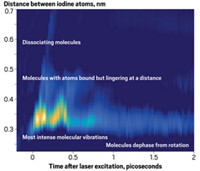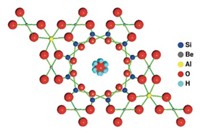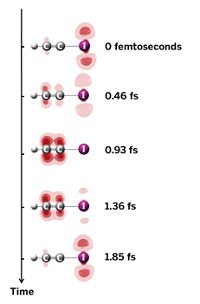Advertisement
Grab your lab coat. Let's get started
Welcome!
Welcome!
Create an account below to get 6 C&EN articles per month, receive newsletters and more - all free.
It seems this is your first time logging in online. Please enter the following information to continue.
As an ACS member you automatically get access to this site. All we need is few more details to create your reading experience.
Not you? Sign in with a different account.
Not you? Sign in with a different account.
ERROR 1
ERROR 1
ERROR 2
ERROR 2
ERROR 2
ERROR 2
ERROR 2
Password and Confirm password must match.
If you have an ACS member number, please enter it here so we can link this account to your membership. (optional)
ERROR 2
ACS values your privacy. By submitting your information, you are gaining access to C&EN and subscribing to our weekly newsletter. We use the information you provide to make your reading experience better, and we will never sell your data to third party members.
Physical Chemistry
Ultra-Long Range Molecules
Rubidium dimers have 100-nm bond lengths
by Jyllian Kemsley
April 27, 2009
| A version of this story appeared in
Volume 87, Issue 17

Pushing chemical bonding to an extreme, a group led by Vera Bendkowsky and Tilman Pfau of the University of Stuttgart, in Germany, has created rubidium dimers with 100-nm bond lengths (Nature 2009, 458, 1005).
Molecules with such ultralong bonds had been predicted theoretically but never before observed experimentally. Normal Rb2 has a bond length of about 0.4 nm.
The new dimers are fleeting, with a lifetime of only about 18 microseconds at microkelvin temperatures. Nevertheless, "the experimental proof of the existence of ultra-long-range molecules is truly a remarkable achievement" that could lead to a new kind of ultracold chemistry, says Jan M. Rost of the Max Planck Institute for the Physics of Complex Systems, in Germany.
The scientists prepared the new Rb2 molecules by using a laser pulse to excite one Rb atom into a so-called Rydberg state, in which at least one electron has a high principal quantum number—34 to 40 in these experiments. That far-flung electron can then form a bond with a distant rubidium atom in the ground state, creating a Rydberg molecule.
In a commentary about the work, Chris H. Greene of the University of Colorado, Boulder, likens the outermost electron to "a sheepdog that keeps its flock together by roaming speedily to the outermost periphery of the flock and nudging back towards the center any member that might begin to drift away."





Join the conversation
Contact the reporter
Submit a Letter to the Editor for publication
Engage with us on Twitter